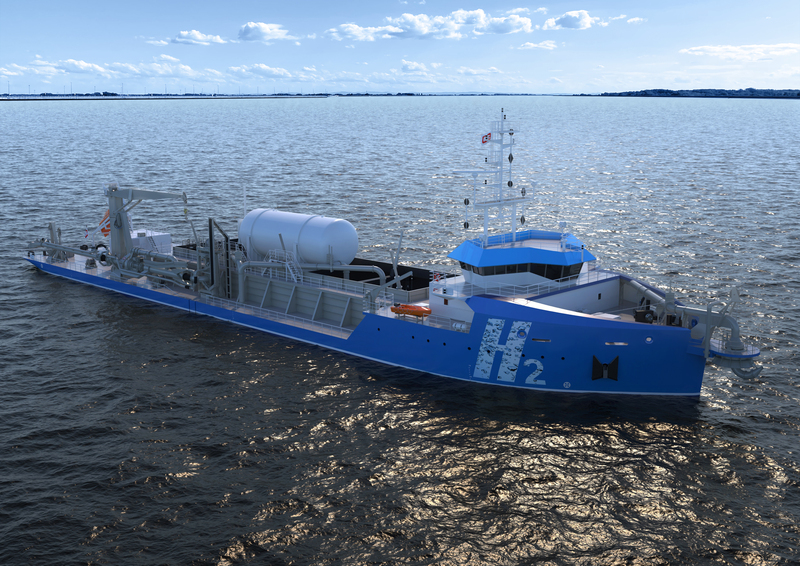Hydrogen-fuelled dredgers to maintain Netherlands’ coastline

Caption: Royal IHC's hydrogen-fuelled THSD is being developed to help the Dutch government reach its C02 neutral by 2030 target. Credit: Royal IHC
Hydrogen is the choice of fuel for a new trailing hopper suction dredger (THSD) design being developed through a partnership between Royal IHC and the Dutch government.
The fuel type was chosen based on its emissions reduction potential, the availability of the fuel and the readiness of the components, including fuel cells and fuel storage, Royal IHC’s Leonard den Boer told CEDA Industry News. Following analysis, hydrogen was found to fit “best with the timeline of being operational in 2024,” said den Boer who is the project leader.
The Dutch Rijkswaterstaat (Ministry of Infrastructure and Water Management) has set itself a target to be CO2 neutral by 2030. To achieve this, it sought cost-effective solutions for its coastal protection projects to significantly reduce CO2 from 2024.
Known as the ‘LEAF’ (low energy adaptive fuel) hopper, the design received an approval in principle (AiP) from classification society Bureau Veritas at the end of March.
The project’s next step is “to form a consortium with dredger operator(s) and to define the conditions together with Rijkswaterstaat,” said den Boer.
Project research began in 2019, and before hydrogen was agreed as the fuel of choice, other options such as methanol and ammonia were considered as possible zero emission fuels for the dredger, he said. The exact capacity of the LEAF hopper is still under discussion.
In a statement, Royal IHC said: “The AiP from Bureau Veritas means that the proposed design of the vessel, encompassing its features and specifications, has been deemed acceptable in this early stage and that the hydrogen system has been safely integrated”.
According to the company, minimal CO2, SOx, NOx and particulate matter is released during the construction of the LEAF hopper, and when operating, like other hydrogen-fuelled vessels, it will release only water vapour.
“In addition, many design features on the LEAF hopper contribute to low energy consumption, including an electric drive train and energy recovery systems,” it said.
While the advice given in this editorial content has been developed using the best information available, it is intended purely as guidance to be used at the user’s own risk. No responsibility is accepted by CEDA or by the Intent Communications Ltd or by any person, firm, corporation or organisation who or which has been in any way concerned with the furnishing of information or data, the compilation, publication or any translation, supply or sale of this Guidance for the accuracy of any information or advice given herein or for any omission herefrom or from any consequences whatsoever resulting directly or indirectly from compliance with or adoption of guidance contained therein even if caused by a failure to exercise reasonable care.